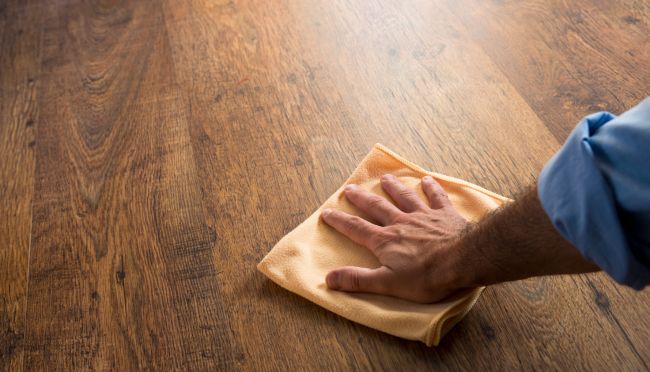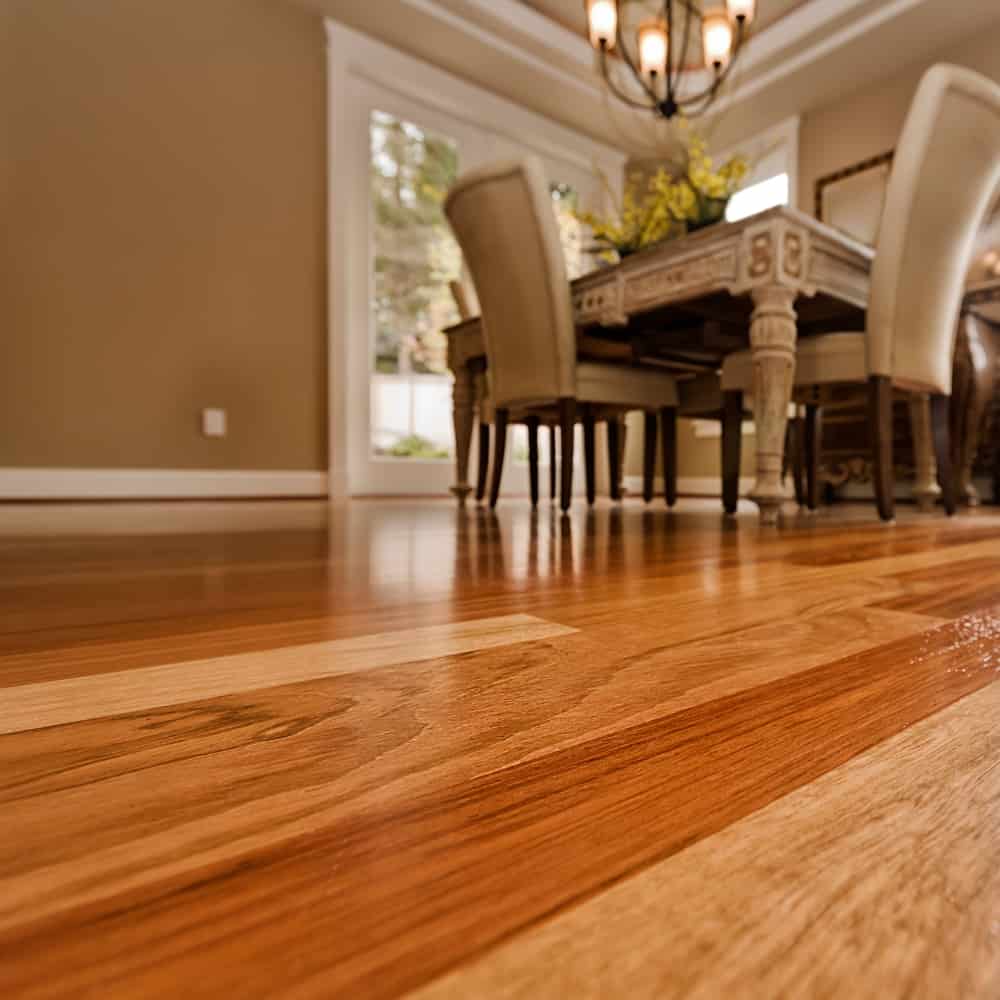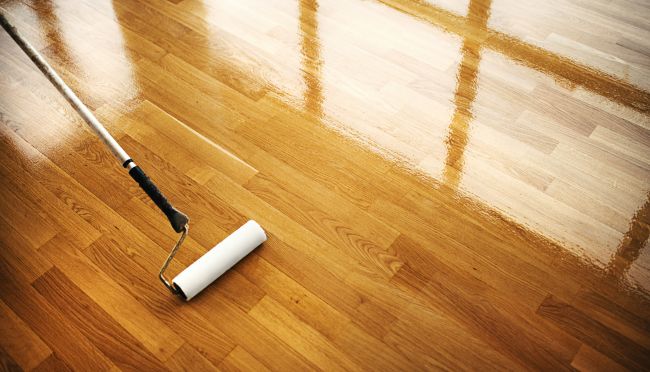Hardwood flooring is a timeless and elegant option for any home, but even the most beautiful hardwood floors can lose their luster over time. Refinishing hardwood floors is a cost-effective way to restore their original charm and extend their lifespan. But how much does it cost? Let’s break down what refinishing involves, the benefits, detailed pricing comparisons, and answers to common questions.
What Does Refinishing Hardwood Floors Involve?

Refinishing hardwood floors is a process that restores worn-out, scratched, or stained wooden surfaces by removing the top layer of the wood and applying a fresh finish. Here’s what typically happens during the process:
- Sanding: The top layer of your floor is sanded to remove imperfections like scratches, stains, and discoloration.
- Staining (Optional): A wood stain can be applied to alter or enhance the floor’s color.
- Sealing: A protective finish, such as polyurethane, is applied to protect the wood and give it a polished look.
Benefits of Refinishing Hardwood Floors
- Cost Savings: Refinishing is far more affordable than replacing your flooring entirely.
- Aesthetics: It rejuvenates tired-looking floors, making them look brand new.
- Durability: Sealing the floor protects it from wear and tear, increasing its lifespan.
- Value Boost: A well-maintained hardwood floor can increase a home’s resale value.
Refinishing Costs at a Glance
The cost of refinishing depends on several factors, including the size of the space, the type of wood, and where you live. Below is a table summarizing typical costs.
| Factor | Cost Range | Details |
| Floor Size (sq ft) | $3 – $8 per sq ft | Larger areas often lead to bulk discounts, while smaller jobs might cost more per square foot. |
| Type of Wood | $4 – $10 per sq ft | Exotic woods can be more expensive to refinish due to specialized care requirements. |
| Geographic Location | $500 – $2,500 per job | Costs are higher in urban areas with higher labor rates, like NYC or LA. |
| Additional Repairs | $100 – $300 | Repairing cracked boards or damaged areas adds to the total cost. |
| Staining and Coloring | $1 – $3 per sq ft | Optional step if you want to change or enhance the floor’s color. |
 Average Costs by Room Size
Average Costs by Room Size
- Small Room (100 sq ft): $300 – $800
- Medium Room (300 sq ft): $900 – $2,400
- Large Living Area (1,000 sq ft): $3,000 – $8,000
Key Considerations When Refinishing Hardwood Floors
When budgeting for refinishing, keep these factors in mind:
- Labor Costs: Labor typically accounts for the majority of the price. Rates can vary based on location and the contractor’s expertise.
- Materials Needed: Sandpaper, wood filler, stain, and polyurethane are some of the materials required for refinishing. Higher-quality materials lead to longer-lasting results.
- Potential Additional Expenses:
- Moving furniture ($50 – $200)
- Eliminating dust with dustless sanding ($200 – $600 extra)
- Repairing damaged floorboards
Frequently Asked Questions (FAQs)
- How long does refinishing hardwood floors take?
Refinishing a hardwood floor usually takes 2 to 5 days, depending on the size of the area and whether staining is involved. - How can I save money on refinishing?
- Get multiple quotes from local contractors.
- Move the furniture yourself to avoid extra labor charges.
- Opt for a clear seal instead of a custom stain to reduce costs.
- Can all hardwood floors be refinished?
Most solid hardwood floors can be refinished multiple times, but engineered wood may have limitations due to its thinner veneer layer. Always consult with a professional before proceeding. - How long does a refinished floor last?
With proper care, refinished floors can last 7 to 10 years in high-traffic areas and even longer in low-traffic spaces. - Is dust-free sanding really worth it?
Yes, dust-free sanding reduces cleanup and minimizes the risk of airborne particles affecting your home’s air quality. It’s especially beneficial for households with allergies or asthma.
Cost-Saving Tips for Refinishing
 If you’re looking to keep expenses manageable, here are a few budget-friendly strategies to consider:
If you’re looking to keep expenses manageable, here are a few budget-friendly strategies to consider:
- DIY Small Areas: For minor scratches, scuffs, or small rooms, DIY refinishing kits from hardware stores can be a cost-effective solution. These kits often include everything you need, such as sanding tools, finishes, and instructions. While this approach can save you money, it does require a steady hand, attention to detail, and a bit of patience to achieve professional-looking results.
- Use Standard Finishes: Custom stains and finishes can add a personal touch and elevate the look of your floors, but they often come with a higher price tag. Instead, opt for standard clear finishes or pre-mixed stains. These options provide a polished, classic appearance while keeping costs under control.
- Schedule Off-Peak: Timing can be everything when it comes to saving money. Many contractors experience slower seasons or reduced demand on weekdays, and some may offer discounts or promotions during these times. Scheduling your refinishing project during off-peak periods can help you save while still getting professional-quality results.
Maximizing the Longevity of Refinished Floors
 Hardwood floors are an investment that can last for decades if properly cared for. Here are some tips to keep them looking pristine for years to come:
Hardwood floors are an investment that can last for decades if properly cared for. Here are some tips to keep them looking pristine for years to come:
- Place rugs in high-traffic zones: Area rugs or runners can protect your floors from wear and tear in busy areas like hallways, entryways, and kitchens. They help prevent scratches and minimize dirt buildup.
- Use furniture pads to prevent scratches: Attach felt pads to the bottom of furniture legs to prevent them from scratching or denting the floor when moved. Be sure to check and replace the pads as they wear down over time.
- Sweep regularly to remove debris: Dust, dirt, and debris can act like sandpaper, dulling the finish of your floors over time. Use a soft-bristle broom or microfiber dust mop to sweep daily.
- Avoid excessive moisture: Water is hardwood’s worst enemy. Clean up spills immediately and use a damp (not wet) mop for cleaning when necessary. Consider using a hardwood-specific floor cleaner for the best results.
By following these simple steps, you can preserve the beauty and finish of your refinished hardwood floors for years to come.
Final Thoughts by Holmes Flooring
Refinishing hardwood floors is a worthwhile investment that enhances your home’s beauty, longevity, and value. While costs can vary based on size, wood type, and location, understanding the process and asking the right questions will help you budget effectively. Whether you choose professional help or a DIY approach, refinishing your floors can transform them from worn-out to wonderful.
If you’re ready to give your hardwood floors a new lease on life, contact a trusted local contractor and explore your options today!


